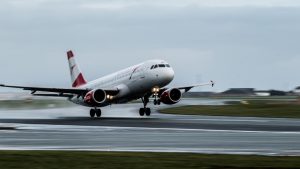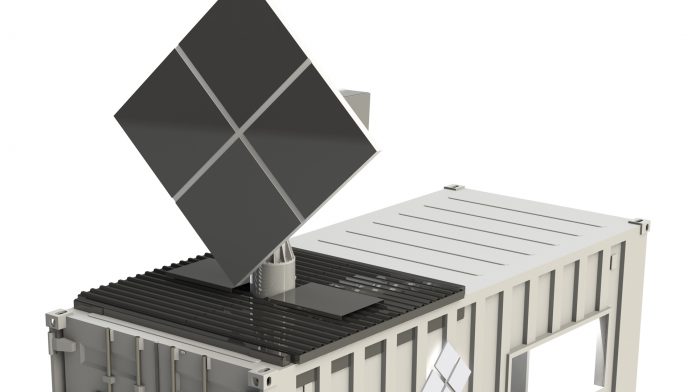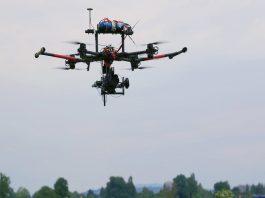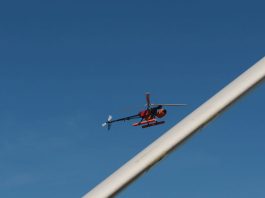Nordic Radar Solutions speaks to The Innovation Platform, about their commitment to producing the next-generation of advanced radar-based systems.
Based in Egå, Denmark, Nordic Radar Solutions is a company committed to developing next-generation advanced radar-based systems for a range of military and civilian applications. It all started ten years ago with a discussion between the founders Per Schmock (CEO) and Torsten Haber Leth Elmkjær (CTO), both being involved in radar system technology from a practical and development point of view.
As a former F-16 fighter pilot and later test pilot, Schmock began dreaming of a target scoring system that would enable a faster and more accurate feedback during the various test drills, saving time and money. In an intense dialogue with radar expert and PhD Elmkjær, they began sketching a whole new radar system.
“From the very beginning, we asserted that existing radar technology was not adequate.
We carefully analysed what was already available on the market and quickly decided to build our own radar system from scratch,” Elmkjær recalls.
So, by thinking outside of the box, the two founders started listing various requirements, and they made a clear and fruitful division of labour. Having a PhD in advanced radar technology, Elmkjær was busy with the technical development of the core radar system, while Schmock – holding an MBA from Henley Business School – led the company as CEO.
Both take great pride in developing the radar system. “In this design we have made virtually no compromises, so we can claim that this radar has been built entirely for our applications,” Elmkjær said.
In the following article, you will see how one core radar system can be adapted to serve in three essential and very different sectors. Yet while they may be different, they all have one thing in common: the need for fast acquisition of detailed highly quality data.

Airport safety
Passenger air traffic has grown at an unprecedented rate during the last five years, a trend that was expected to continue into the future, with regions nearly doubling their passenger traffic by 2020. That was, of course, until the COVID-19 pandemic became global. But all forecasts beyond the current crisis indicate that the trend is only temporarily stalled.
The challenges, however, remain: airport authorities and airlines are increasingly facing safety threats to passengers, crews, and aircraft caused by
- A wide range of foreign object debris (FOD) on runways and taxiways
- Birds-aircraft strikes (BAS)
- The growing number of drones in the airport and surrounding areas
Given the high impact of potential accidents and incidents – both in terms of damage to aircraft and fatal crashes with loss of lives – there is a continuous adoption of best practices and technologies to mitigate risks associated to the ‘safety of flight’ (SOF).
Today, all airports rely on vehicle patrols for periodic inspections of runways, comprising several limitations, such as poor visibility and inconsistency of personnel performance (causing human errors). Only a few airports have radar-based solutions due to their high price and limited features, resulting in a business case that is not sufficiently convincing to airports and airlines.
These solutions only cover the runway surfaces, thus presenting very limited bird detection capabilities.
FODBASA is the solution
Nordic Radar Solutions has developed the Foreign Object Debris and Bird-Aircraft Strike Avoidance (FODBASA) system, which is based upon a high precision radar and one or more cameras that can detect threats caused by Foreign Object Debris (FOD), wildlife, and drones in airport environments.
FOD, wildlife, and drones all pose a significant risk to aviation safety, and the aim of the FODBASA system is to supplement or replace existing procedures and systems currently in use in airports worldwide, to counter this risk.
The FODBASA system is a multisensor system designed to detect FOD, wildlife, and drones in and around airports. Wildlife covers birds flying or sitting on the ground as well as any other animals which can pose a safety threat to aircraft operations.

Wind energy is growing – and so are the challenges
The wind energy sector is the next to benefit from the radar systems from Nordic Radar Solutions. Wind turbines are proven to kill birds and bats along with having a negative impact on those who live close to them. These are among the most common reasons for the rejection of wind farm projects or frequently cause operational restrictions through shut-down requirements.
When new wind turbine installations are being planned, studies must be conducted to understand the potential impacts of wind farms on local birdlife. Often, some limitations are imposed on the wind turbine operation to protect birdlife.
There is a solution
Nordic Radar Solutions is working together with its partners, Chalmers University (Sweden), GEOsat (Germany), DHI (Denmark) and Circle Consult (Denmark) to develop a cost-effective multi sensor system for automated bird detection and species recognition in wind farms.
Through integration with the wind farms’ Supervisory Control and Data Acquisition (SCADA) systems, the Wind Turbine Bird Strike Avoidance system (WITURBISA) will perform the automated sensor-assisted shutdown of wind turbines based on the prediction of harmful interactions with endangered birdlife, representing an enabler for wind energy in locations where birdlife is an obstacle.
Most optimal locations for wind farms are already being exploited and the remaining options have an inopportune high presence of birdlife. WITURBISA will radically improve wind farms’ ability to avoid this interaction by increasing their response time, minimising curtailments, and reducing costs, allowing wind energy to realise its full commercial potential.

Integration
The WITURBISA system aims to integrate high accuracy sensors and advanced sensor fusion to build up a unique multisensor system capable of autonomously managing wind farms’ interaction with endangered birdlife through detection, species identification, and prediction of birds’ movements.
The autonomous evaluation of the risk of interaction will decide and initiate curtailment of only those wind turbines in the wind farms that could cause harm to the approaching birds.
State-of-art sensor technologies and real time monitoring
The technical development will leverage state-of-the-art sensor technologies to a level not existing today, allowing for a significant reduction in the environmental impact of existing or future wind farms.
It will do so by enabling real time monitoring of birdlife, including autonomous decision-making or, in the cases where there is an operator, with clear and unambiguous decision support. The main system consists of software and hardware integrating:
- Radar sensor responsible for delivering detailed spatial formation, trajectory patterns, estimate of bird counts and physical separation in 3D
- Camera sensors responsible for the video-based recognition of bird species through deep learning algorithms
- Sensor Fusion responsible for sensor/data fusion between the different sensors
- Interface between WITURBISA and WF’s SCADA system, enabling automated wind turbine’s curtailment

Effective and fast target scoring is essential
Lastly, the sector where it all started – with restrained military budgets and increasing complexity effective and fast target scoring is essential. Traditional methods are no longer seen as being sufficient – there is a need to produce a valid feedback almost in real time.
Advanced system
Nordic Radar Solutions has developed an Advanced Battlefield Integrated Scoring System (ABISS) that is a world unique, remote, advanced, stand-alone, commercial off the shelf (COTS) based radar system that delivers high quality, near real-time weapons scoring data to military customers when operating in extremely demanding environments. With the Danish Armed Forces as partner and sponsor, Nordic Radar Solutions has currently developed its first target scoring system for the Royal Danish Air Force shooting range at Rømø in South Western Denmark.
Saving time – reducing cost
ABISS significantly reduces overall operating cost when performing sophisticated weapons testing and training events by reducing the amount of ammunition and range time. Additionally, a faster and better feedback improves the quality of training.
How it works
The ABISS system consists of two units; a container with the main ABISS system and an operator control system. The container includes a lift and foldable roof, which allows to stow the antenna and antenna pedestal inside the container, when the ABISS system is not in use. This further protects the entire system from the local environment.
The container lift and roof are fully automated and require no manual effort to exercise. The operator control system provides control of the ABISS system through a multi-screen setup and a laptop for manual control and selection. The container and the operator control system are connected through a dedicated ethernet cable. The system does not require additional equipment to be installed on the shooting range and is flexible in operation with simple and rapid set-up.
Ka-band radar is the core
The core of the system is made up of an advanced Ka-band radar, which illuminates the selected target area with multiple beams, thus being able to accurately measure impact point, velocity, and angle of the incoming weapon in near real-time, during day and night and in all-weather. The system operates without requiring access to the Internet.
The sensor information is accompanied with relevant information about the shooting scenario which is presented to the range officer in the form of a state-of-the-art user interface. Data is automatically logged and selected statistical performance data in relation to the pilot/operator is calculated. The system will generate a final report of the exercise for debriefing of the pilot/operator after landing.
An advanced radar system is the core
One of the major key requirements in the various applications of the radar, is the need for detection of very small targets. In particular, detecting projectiles in the target scoring application and small foreign object debris (FOD) in the airport safety application both pose significant challenges for a radar system.
To provide detection capability against such small objects, the radar will therefore operate in the Ka-frequency band (approximately 35GHz) in which the wavelength of the radar signal is approximately 1cm. This is because the ability to detect a target diminishes when target dimensions are comparable to the wavelength. Thus, using a lower operating frequency with a longer wavelength would mean we would be unable to detect small targets such as projectiles used by aircraft.
In comparison, many radars operate in the X-band, where the wavelength is approximately 3cm.
So, even though it is more complicated to design and build a radar in the Ka-band frequency, we have chosen to do so due to the obvious advantages it provides in the performance of the radar system.
Separate antennas
The special radar system designed by Nordic Radar Solutions utilises separate transmit and receive antennas. This provides for a very high isolation between the transmitted and the received signal, which is not possible when utilising a combined transmit and receive antennas. Without this isolation, it becomes very difficult to detect weak return signals stemming from the often very small targets. Both antennas are based on an innovative very low-loss slotted waveguide (SWG) array design with inherent beam steering capability and support of multiple beams.
Monopulse operation gives very high accuracy
The receive antenna facilitates advanced monopulse operation which enables the radar system to determine the position of a target with very high accuracy. The ability to operate with multiple beams means the radar system operates with a high field of view while still maintaining a very high resolution due to the narrow beam width of each individual beam.
These characteristics means the radar system can monitor a wide target area in the scoring application and capture the impact position of bombs and projectiles accurately, even if they miss the target by a significant margin.
Our radar works in 3D
The high-resolution antennas’ beams can be pointed in both elevation and azimuth, which means the radar can determine not only the horizontal position but also the height of the target (3D location), which will be fundamental to the airport safety and wind energy applications.
It works even in 4D
The radar is able to transmit multiples waveforms and process the received signals in the doppler frequency spectrum. This means that the radar can measure the speed of targets and so, in total, it is a 4D radar. This significantly increase the ability to distinguish target from objects which provide a radar return signal but are not a target of interest. As an example: our radar will have the ability to measure the doppler frequency characteristics of a bird or a drone, and such targets will be distinguished via their return signals, thereby greatly enhancing the chances to detect and classify birds and drones, as opposed to stationary targets.
Nordic Radar Solutions
+45 8699 2726
contact@nordicradarsolutions.com
https://nordicradarsolutions.com
Please note, this article will also appear in the second edition of our new quarterly publication.









